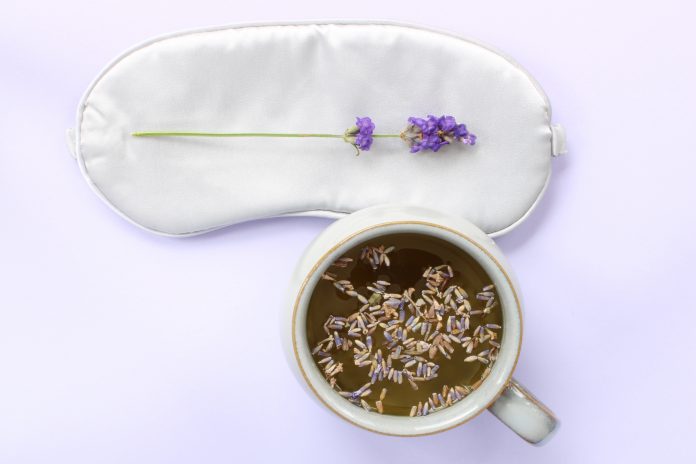Dr Deborah Lee, Dr Fox Online Pharmacy, explores how aromatherapy is fast emerging as a form of alternative medicine for many health conditions, including insomnia
There is increasing consumer demand for natural products which promote health and wellness. Many people are turning away from conventional medicines, largely due to concerns about risks and side effects, and are looking for an alternative, natural medicines.
Economists predict the global market for natural products will increase by 18.2% per year until 2024. More than 300 plants are now used as sources for homoeopathic medicines.
Aromatherapy is a holistic, natural therapy, and a type of complementary medicine. The technique uses essential oils, which are pure oils, extracted from plants. These are applied topically to the skin as skin products, used as massage oils, directly inhaled from a diffuser device, or when added to water, they can be used for immersion.
What could be a more natural form of therapy?
What are essential oils?
Essential oils are extracted from plants using steam distillation.
Lavender is very suitable for the distillation process. This is not, however, the case with all plants. Although in theory any plant could be distilled, the end result would not necessarily always be useful or pleasing.
The distillation process is time-consuming and expensive. Large quantities of good quality, plant material are needed to produce even a few drops of purified oil, meaning essential oils are relatively expensive. An incredible 3 pounds of lavender flowers are used to create just 15ml lavender oil!
Benefits of essential oils
Essential oils have been used to treat insomnia associated with a variety of medical conditions.
One 2015 UK study, reported on the use of aromatherapy sticks (natural nasal inhalers) in a group of cancer patients suffering from insomnia. Over 13-weeks, the group used a total of 64 AromaSticks containing a variety of essential oils, such as bergamot, sandalwood, frankincense, mandarin, and lavender.
- 94% of patients reported use of the AromaStick to help them sleep.
- 92% said they would do so again.
- 64% of patients reported at least one point of improvement in sleep on the Likert sleep scale.
This is all very promising. However, most of the research on essential oils has been done on lavender.
Does it work?
Lavender oil is the most frequently recommended essential oil to aid sleep.
A 2014 systematic review examined 15 quantitative and 11 randomised controlled trials on the effects of inhalation of various essential oils on sleep. Most studies showed a beneficial effect from a range of essential oils on sleep. However, benefits were most frequently reported for the use of lavender.
What is lavender?
Lavender oil is derived from the flowers of Lavandula angustifolia. The major components of lavender oil are linalyl acetate (51%) and linalool (35%). Lavender oil, linalool, and linalyl acetate are all used in aromatherapy.
Lavender oil can be directly inhaled, used in bath products, applied to the skin as a massage oil, or taken by mouth as a capsule.
Once applied to the skin for a massage, linalool and linalyl acetate are promptly detected in the bloodstream and reach peak levels within 19 minutes.
Health benefits of lavender
The medicinal properties of lavender have been known for centuries. Cleopatra reportedly used lavender in her seduction of Julius Caesar in BC47!
Lavender is believed to help calm anxiety symptoms and increase relaxation. Many people believe it to be an effective treatment for anxiety and depression. Lavender also has sedative properties. Other reports suggest it may help reduce epileptic fits, treat migraine, and relieve pain.
Medical research
In a 2013 publication in the journal Evidence-Based Complementary Medicine, the authors reviewed the up-to-date research in animals and humans, of the effect of lavender on the nervous system. They found that most human studies, were only small, short term studies, however, these did show lavender to have a beneficial effect.
The authors quoted 3 studies, involving healthy college students, coronary heart disease sufferers, and middle-aged women complaining of insomnia, all of which concluded that use of lavender improved their quality of sleep.
In 2005 the Journal of Alternative and Complementary Medicine reported that 10 individuals suffering from insomnia, who used 6-8 drops per night of lavender oil, obtained a 2.5 point reduction in the Pittsburgh Sleep Quality Index (PSQI) insomnia score. This score is a validated research tool used to assess the quality of sleep.
Another study in the journal The Lancet, reported on 4 geriatric patients dependent on benzodiazepines, who had developed rebound insomnia when their medication was discontinued. The use of lavender oil via aromatherapy relieved their insomnia and their sleeping patterns were restored.
In 2015, a randomised controlled trial of 79 college students with poor sleep, compared the effect of a lavender skin patch with the use of a placebo patch. Both study groups were advised about good sleep hygiene and sleep quality was measured with a Fitbit tracker.
Although sleep quality improved in both groups, the biggest improvement was seen in the lavender group, and this was statistically significant. The lavender group also said they woke feeling more refreshed in the morning.
Lavender and the sleep cycle
Various studies have examined the effect of lavender on the sleep cycle, and some have had positive findings.
For example, a 2005 American study reported the effects of lavender oil on the sleep cycle of 31 young, healthy sleepers. Study participants inhaled either lavender or distilled water, at around 11 pm, on 3 consecutive nights. Sleep recordings were taken, and data was recorded about sleep and mood.
In both men and women, inhalation of lavender increased the percentage of slow-wave (deep) sleep. In women, the use of lavender increased stage 2-light sleep and decreased REM sleep. The length of time to the first waking in the night in women (wake after first onset sleep latency) was also increased.
Slow-wave sleep (NREM) is deep sleep, imperative for human survival. During slow-wave sleep, brain metabolism and general levels of activation, slow down to around 75% of their normal levels when awake. Slow-wave sleep is important for memory consolidation.
REM sleep – associated with rapid eye movements – is the time in the sleep cycle when the thalamus is active. This is when dreams occur. REM sleep occurs in short bursts during the night, lasting around 10 minutes.
A lowering of REM sleep could be a sign of a resting brain. Notably, when REM sleep was reduced, there were then longer periods of deeper, slow-wave sleep.
Study participants liked using the lavender patch and reported feeling more energetic in the mornings.
Lavender and the nervous system
Lavender directly affects specific parts of the brain
Inhalation of lavender seems to primarily affect the amygdala, the part of the brain associated with emotion, survival instinct and memory, and the hippocampus associated with long and short term memory and spatial awareness.
Lavender affects neural pathways
Lavender has a ‘damping-down’ effect which helps control and reduces anxiety. It has been shown to affect several different nerve transmission pathways.
- Lavender stimulates the GABA neurotransmitter pathway.
Gamma-aminobutyric acid (GABA) is a chemical-messenger molecule, acting within the brain, peripheral and autonomic nerves. GABA activates GABA receptors found on the surface of nerve and brain cells.
GABA receptors are the most common type of receptor found in the human brain. Activating a receptor is like switching on a switch. Once ‘switched on,’ the shape of the GABA receptor is slightly altered, reducing the ability for ions (atoms which carry an electrical charge) to pass in or out of the cell. This reduces the ability of the neuron to function. The nerves quieten and become generally less excitable.
Therefore lavender, by activating GABA receptors, appears to have a calming effect on the nervous system.
Benzodiazepines such as diazepam, frequently used to calm anxiety, work by activating the same receptors.
- Lavender also affects acetylcholine (ACh) transmission. ACh is one of the body’s most important neurotransmitters. Linalool has been shown to decrease levels of ACh in the mouse. This may be another reason for the anxiolytic and calming effects of lavender.
- Lavender also has an inhibitory effect on the sympathetic nervous system (SNS), via the activation of histamine receptors.
The SNS is our ‘fight, fright and flight’ mechanism, which is switched on when we are under threat. When we are stressed or anxious, the SNS is stuck in overdrive. Lavender seems to have a calming effect on the SNS.
Lavender has additional properties to aid sleep
- EEG recordings during inhalation of lavender for relaxation often show increased alpha wave brain activity. In the future, lavender may have a role, for example, in the management of epilepsy.
- GABA also stimulates the breakdown of serotonin to N-acetyl-serotonin, the precursor to the sleep hormone melatonin. As lavender stimulates GABA receptors, it may aid sleep by assisting in the production of melatonin.
- Lavender has antioxidant properties in the brains of mice. Antioxidants prevent cellular damage caused by free-radicals, dangerous molecules which cause DNA damage. Lavender is thought to have neuroprotective effects in the mouse brain.
Could there be a future role for lavender in the treatment of degenerative brain conditions such as Alzheimer’s disease?
Using lavender oil
Lavender oil is used to improve sleep is by inhalation of lavender vapour
Sleep doctor recommend using lavender oil for 30-minutes in a well-ventilated room.
- Sprinkle a few drops onto a cloth and inhale directly, or
- Use a few drops in an aromatherapy diffuser or vaporiser.
There is no definite need to heat lavender oil, as lavender vapour is produced at room temperature, but 2-3 drops can be added to warm water, for example, to the bath, or to a bowl of warm water to produce a steam inhalation.
Take care –
- Lavender essential oil is very concentrated and should not be applied directly to the skin, as it can cause severe skin irritation. To use lavender as a massage oil, you should use a specific massage product which is more dilute.
- Lavender oil should be a pure product and not just an additive along with any other carrier oil. It should also be packaged in a dark bottle to protect the oil from sunlight.
- You can also inhale the vapour just by placing lavender-soaked cotton wool balls in a container in your room, or by your bed.
In a randomised 2013 trial of the use of lavender oil in women complaining of sleep difficulties after childbirth, 4 drops of lavender oil were dropped onto cotton wool balls and placed in a container near their pillows. Before going to sleep, they inhaled 4 deep breaths from a 20 cm distance, and then kept the canister in place overnight.
There was a significant improvement in sleep quality in the lavender group compared to the placebo group. Inhaling lavender was shown to improve sleep latency (the time it takes to get off to sleep) and the duration of sleep, but other aspects of sleep were unaffected.
For more information
- Lavender and the Nervous System (2013) – Evidence-Based Complementary and Alternative Medicine
- The Relaxing, Sleep-Promoting, Health-Boosting Powers of Lavender – The Sleep Doctor











